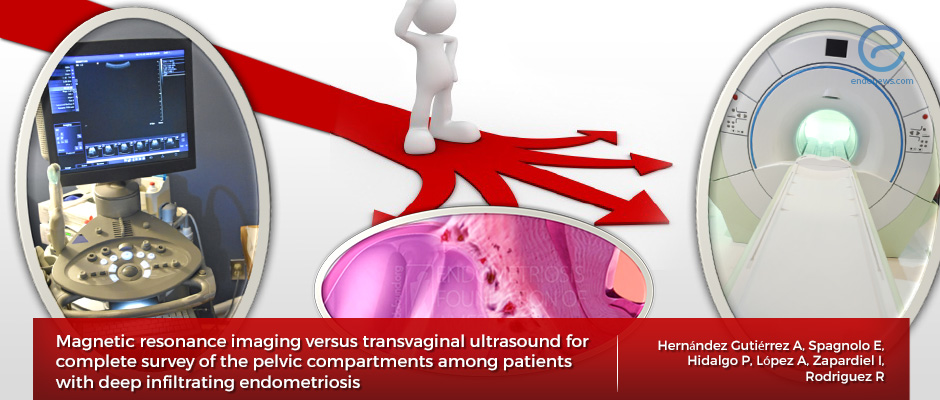Which Diagnosis Technique is Better?
Aug 1, 2019
Transvaginal ultrasound seems to be more accurate in detecting the localization of vaginal and recto-vaginal endometriosis while magnetic resonance imaging is better in localizing bladder endometriosis.
Key Points
Highlights:
Transvaginal ultrasound seems to be more accurate in diagnosing vaginal and recto-vaginal endometriosis while magnetic resonance imaging (MRI) is better at diagnosing bladder endometriosis.
Importance:
The accurate diagnosis of deep infiltrating endometriosis (DIE) is important for decision making around therapeutic strategies.
What's done here:
Researchers analyzed 48 women with DIE.
Key results:
- Transvaginal endometriosis has an accuracy of 77 percent in detecting rectovaginal endometriosis while MRI had a 69 percent accuracy.
- The accuracy of transvaginal ultrasound is 94 percent in detecting vaginal endometriosis compared to 89 percent with MRI.
- MRI has greater accuracy (96 percent) in detecting bladder endometriosis compared to transvaginal ultrasound, which has an accuracy of 92 percent.
- The size of the nodule does not have an effect on the accuracy of the two techniques.
Limitations:
- The number of patients in this study was relatively low and it was difficult to measure the nodule size due to surrounding fibrosis. These factors could have influenced the results obtained.
- There were no nodules that were smaller than 1 cm and this could represent a bias in study results.
- All patients included in the study had DIE and this could influence the sensitivity and specificity of the imaging techniques.
Lay Summary
Transvaginal ultrasound provides a more accurate localization of vaginal and recto-vaginal endometriosis compared to magnetic resonance imaging (MRI) according to a study published in the International Journal of Gynecology & Obstetrics. However, MRI has better accuracy in detecting bladder endometriosis and should be recommended if suspicion of bladder endometriosis exists, according to the authors. The accuracy of the two methods does not seem to be influenced by the size of the nodules.
Choosing the right method can increase the accuracy of diagnosing deep infiltrating endometriosis (DIE) and ensure the timely initiation of the best treatment course.
In order to compare the efficacy of the two techniques in detecting DIE and to evaluate whether the size of the nodules has an influence on diagnostic accuracy, a team of researchers led by Dr. Roberto Rodriguez at University Hospital “La Paz” in Madrid, Spain, analyzed 48 women who were diagnosed with DIE.
They found that transvaginal ultrasound was able to detect rectovaginal endometriosis in 77 percent of cases compared to 69 percent when MRI was used. The ratios were 94 percent with transvaginal ultrasound versus 89 percent with MRI in the case of vaginal endometriosis.
In contrast, MRI showed greater accuracy in detecting bladder endometriosis compared to transvaginal ultrasound (96 percent versus 92 percent).
The nodule size did not have an influence on the accuracy of either technique.
“All pelvic compartments can be accurately mapped by using the two complementary methods for diagnosis of DIE,” the researchers wrote. They added that MRI should be recommended when bladder involvement is suspected.
Transvaginal ultrasound is a procedure used to examine the vagina, uterus, fallopian tubes, ovaries, and bladder with an instrument that is inserted into the vagina. The instrument generates sound waves that echo off pelvic organs creating a picture on a computer screen.
An MRI is a less invasive method that can create detailed images of the pelvic organs using a magnetic field and radio waves. It shows promise in detecting endometriosis but may no be sufficiently accurate in diagnosing all cases of endometriosis and surgery remains the surest method of diagnosis.
Research Source: https://www.ncbi.nlm.nih.gov/pubmed/31220340
transvaginal ultrasound magnetic resonance imaging MRI diagnosis deep infiltrating endometriosis vaginal endometriosis rectovaginal endometriosis bladder endometriosis

